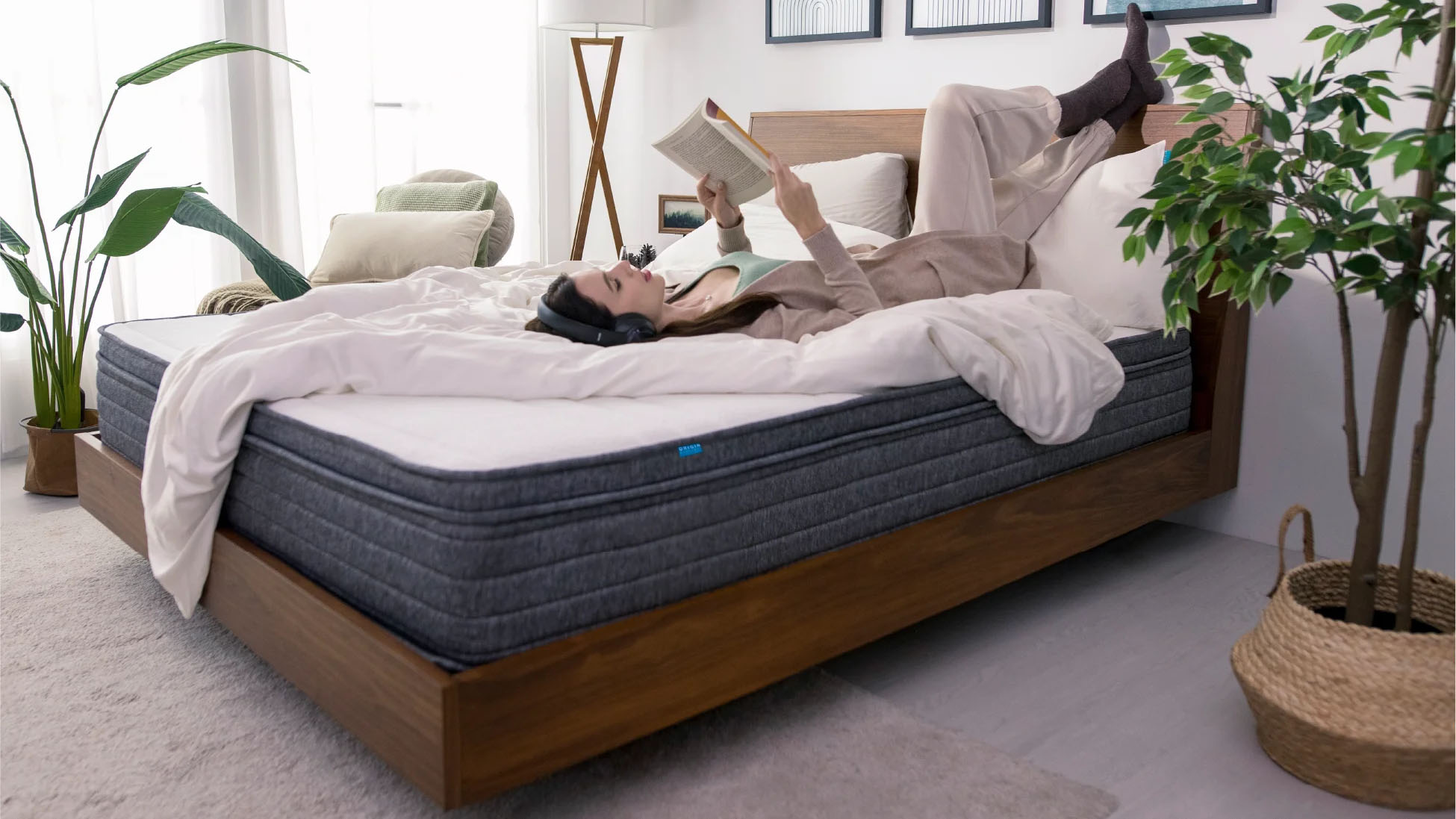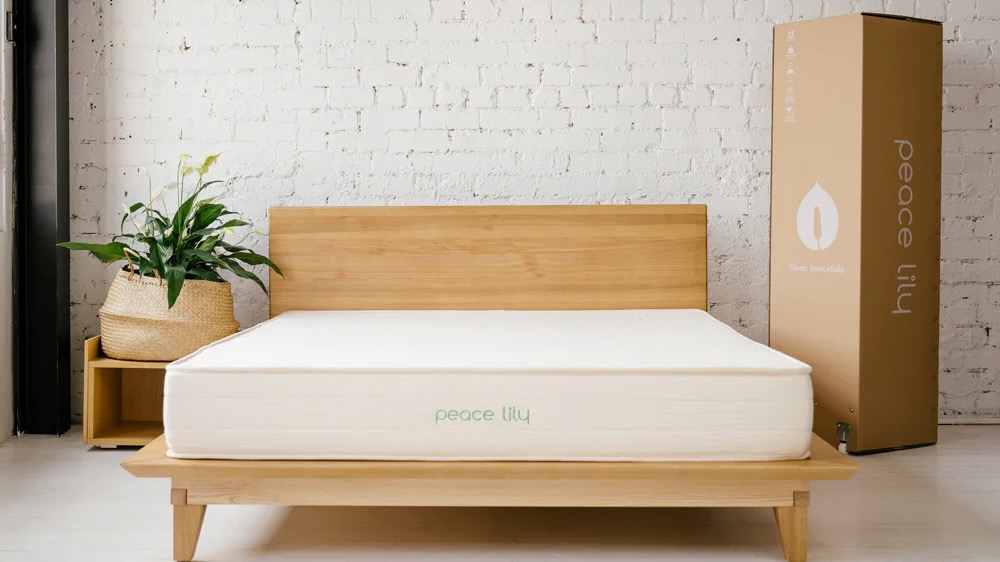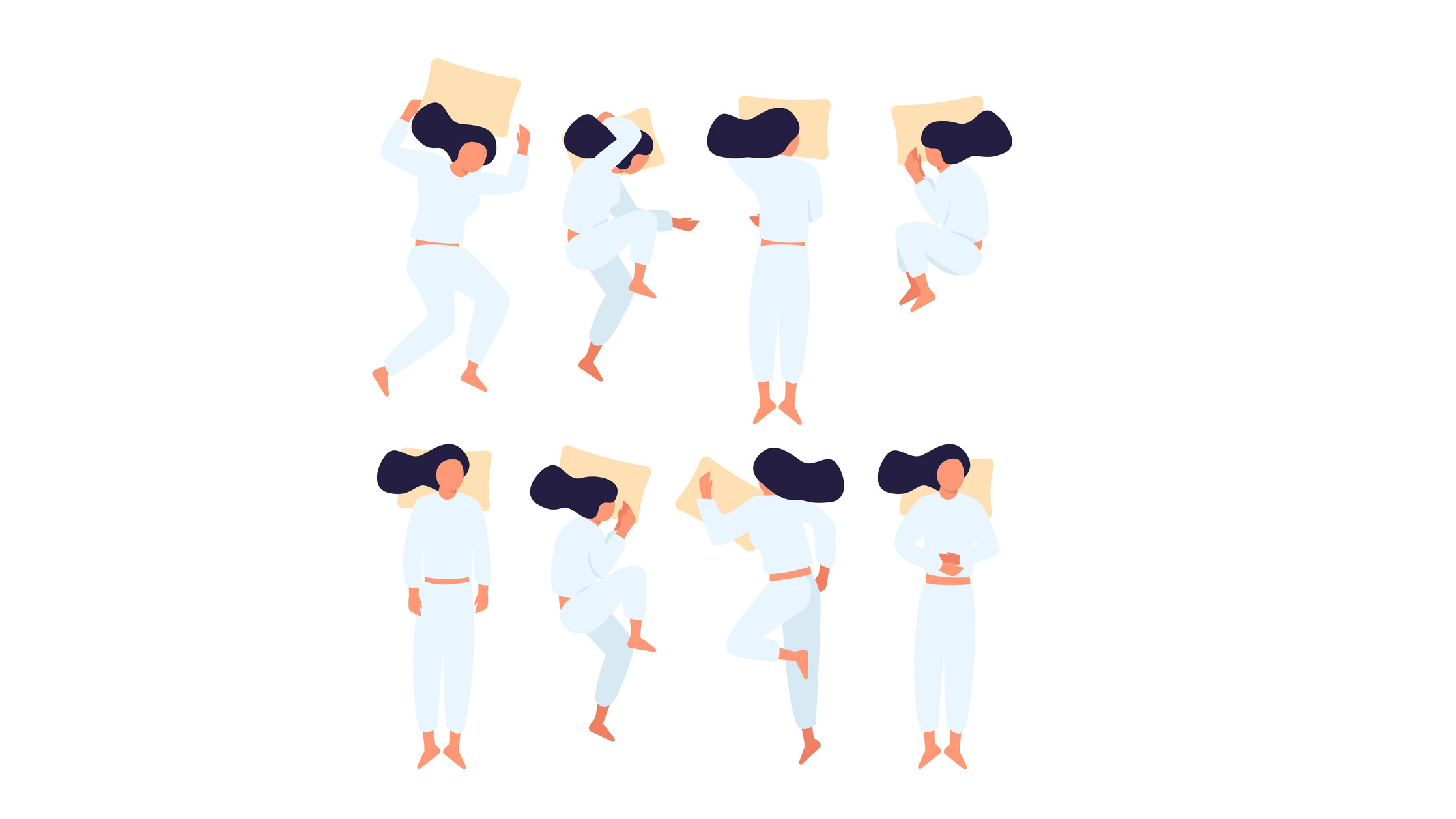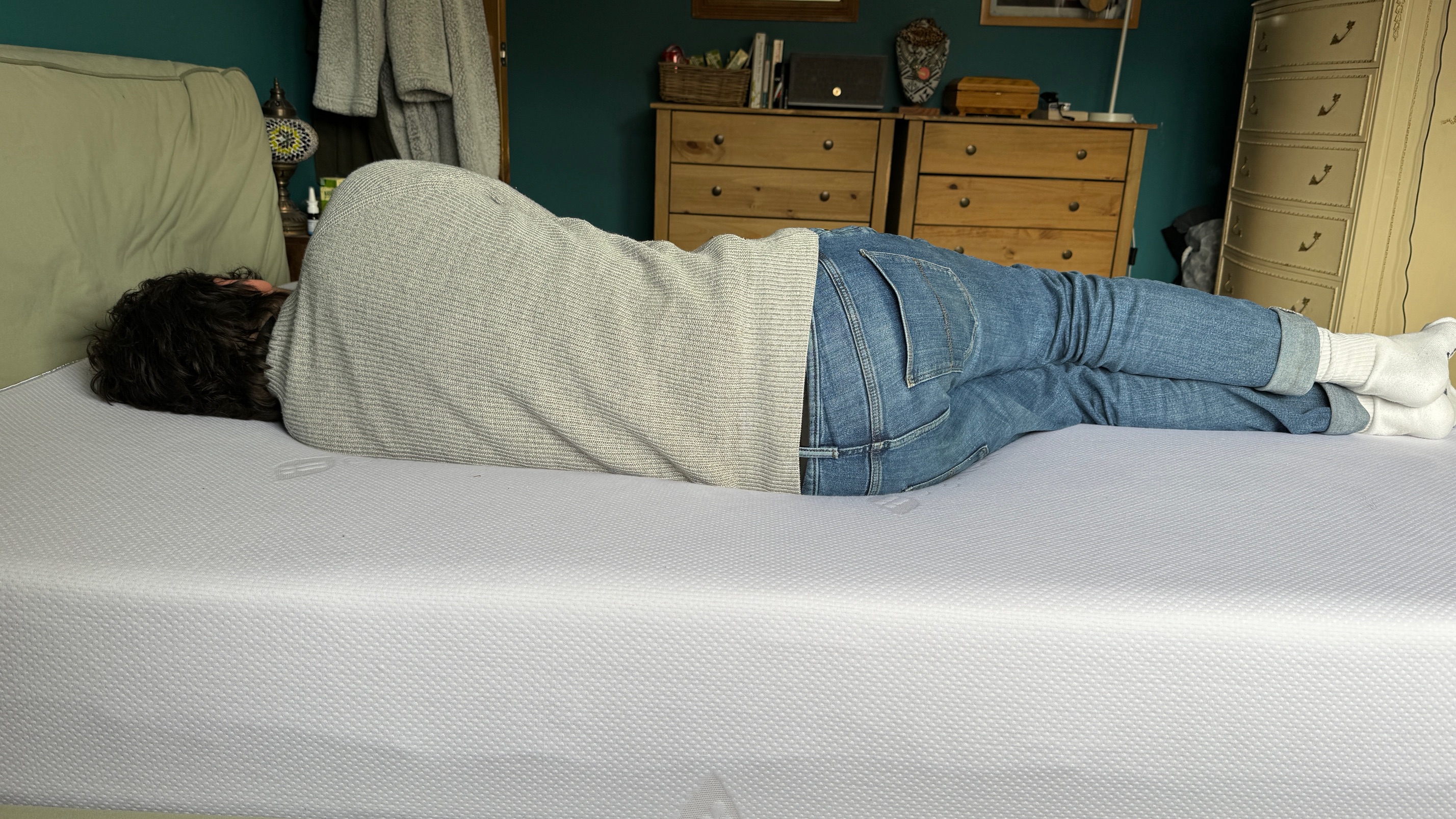How to choose a mattress — tips from an expert
A certified sleep coach offers expert advice on how to choose a mattress that suits your body

There are plenty of mattresses to choose from these days, and with so many bed-in-a-box options thrown into the mix, figuring out which mattress best suits your body and sleeping style can be very confusing. And while some brands and retailers still allow you to pop into a store to try one for a few minutes, that's not the best way to find the right kind of mattress for you.
As a mattress editor and certified Sleep Science Coach, I’m here to tell you that picking a comfy new bed doesn’t have to be difficult. In fact, answering a few key questions is all it takes to kick start your mattress-buying journey.
When choosing a mattress, my number one rule is to buy one that comes with a sleep trial. This allows you to return the mattress within the trial period for a refund or exchange if it isn’t right for you. All the best mattresses in Australia come with a sleep trial, ranging from 30 nights to 120 nights, depending on the brand.
Trials are particularly important when buying online as you won’t necessarily find them in a bricks-and-mortar store and, as I've already mentioned, a few minutes really isn't enough time to judge an investment like a mattress. The trial periods also give you time to adjust to the new mattress, which is important to do before you make a final decision.
There's more to it than a free trial, though. So, here’s my expert advice on how to choose a mattress that's right for you.
Mattress types explained
There are six main types of mattresses for you to choose from, but not all of them will suit you for reasons I'll explore in this article. Moreover, a couple of these aren't very common in Australia (although it is possible to hunt them down) and cost a lot more than the standard varieties. Knowing the basics about each one — even the rare ones — will make your shopping experience so much easier:
1. Hybrid: this type of mattress is made from foam and either coils or springs. The foam is part of the comfort system and the coils offer the support. Hybrids are bouncier than all-foam mattresses (and typically more expensive), but they sleep cooler thanks to better airflow through the coils / springs. Our pick of the best mattress to buy right now is a hybrid and you can read all about in our in-depth Sleeping Duck Mach II review. You can also take a look at our Origin LumbarCloud review to get an idea of how a combination of foam and springs can still offer a 'sleeping on a cloud' feeling.
Get instant access to breaking news, the hottest reviews, great deals and helpful tips.

2. Foam: this mattress type contains just foam — typically multiple layers of them — without a coil or spring in sight. It’s a great choice if you love mattresses that hug the body, but all-foam beds retain more warmth than other types, so tread carefully if you’re prone to overheating during the night. There aren't too many foam-only mattresses in Australia, but the most popular brand is Koala. You can read our full Ergoflex 5G mattress review to find out how memory foam offers superb pressure relief and motion isolation — they’re excellent at dampening the movements of your partner so your sleep isn't disrupted.
3. Innerspring: often mistaken for a hybrid, this traditional mattress type has a coil-based system to offer support. We don’t recommend straight innersprings if you need lots of pressure relief or motion isolation, but some people still prefer them because they’re bouncy and affordable. That said, there aren't too many brands and stores in Australia still offering innerspring mattresses, although you can find some that use a combination of innersprings and coils.
4. Latex: not to be mistaken for latex hybrids, pure latex mattresses are constructed with layers made entirely of latex. Most use natural or organic latex, as is used in the Peace Lily Latex Mattress. These are typically longest-lasting mattresses, with excellent pressure relief and natural cooling power.

5. Air mattress: here the support core is made from air chambers, which are inflated via pump (or app or remote if there’s smart functionality). Air mattresses are a good choice if you want to control the firmness of your mattress and aren’t sure what type of feel you like best. To be clear, these are very different to air beds for guests and much more expensive — if you can even find one in Australia.
6. Smart mattress: these are app-controlled beds that track your sleep duration and quality, as well as suggesting possible improvements. I tend to take most sleep tracking results with a pinch of salt (even those from a fitness tracker or smart ring) as these are not conducted in lab environments with proper sleep testing protocol. However, the data can be interesting to give you a general overview of what's happening with your sleep. Smart mattresses and smart beds often offer custom cooling and heating (for each side individually), plus custom firmness for you and your partner. One brand available in Australia is Eight Sleep.
How to choose a mattress firmness level
When choosing mattress firmness, I recommend letting your sleep position and body weight do most of the talking — both these factors have a big impact on the firmness you’d find most comfortable.
Below is a guide to the different firmness levels and who they suit most:
Firmness rating | Feel | Who should choose it |
|---|---|---|
1-2 | Pillow soft | Side sleepers weighing under 60kg |
3 | Soft | Side sleepers weighing under 60kg |
4 | Medium-soft | Side sleepers of light to average weight who love soft beds |
5 | Medium | Side sleepers of any weight; back and stomach sleepers weighing 60kg or less |
6-7 | Medium-firm | Back, stomach and side sleepers of average weight (60-100kg); sleepers with back pain |
8-9 | Firm | Heavier bodies weighing over 130kg; sleepers with back pain who like firmer mattresses |
10 | Hard firm | We don't recommend this level of firmness unless it's advised by your health practionier |
How to choose a mattress thickness
Mattress thickness refers to how tall a mattress measures from the base to the top. It can affect the overall feel of the mattress and, as with firmness, body type and sleep position are key to choosing the right height. Your bed frame and whether you share a bed are also important factors.
Here's a quick breakdown of mattress height:
Type: | Height range: | Best for: |
Low profile | 5-12cm / 2-5 inches | Babies and infants, foldaway beds |
Slim | 12-20cm / 5-8 inches | Kids, people with limited mobility, guest rooms |
Standard | 20-30cm / 8-12 inches | Most body types and sleep styles |
Thick / Deep | 30-41cm / 12-16 inches | Plus-sized sleepers, side sleepers, bed sharers. Not suitable for some adjustable bed bases |
Extra thick / Extra deep | 41cm / 16 inches or more | Plus-sized adults, families, large bedrooms. Not suitable for most adjustable bed bases |
How to choose a mattress for your sleep position
The way you sleep is a big factor in what type of mattress you should choose. I’ll be speaking in broad terms in this article, but you can use that information to help choose a mattress based on your sleeping position:
Side sleepers: Pick a mattress that offers constant pressure relief around your hips, shoulders and knees. Those pressure points will be impacted the most by your mattress, so softness and contouring is needed to help you sleep comfortably. A soft to medium-firm mattress is the best choice for side sleeping.

Back sleepers: Choose a mattress that has ample support layers and a focus on the lumbar region. You want to remain on top of the mattress and not sink down into it, as sinkage could cause your hip (the heavier part of the body) to dip, which can lead to pain in the long run. You might also enjoy a pillow-top mattress (or topper) to add an instant touch of softness without having anything too contouring. Medium-firm is ideal for most people, with heavier persons leaning towards firm back sleeping mattresses.
Stomach sleepers: Like back sleepers, you should choose a mattress that keeps you on top of the sleep surface to leave your spine in healthy alignment. Any dip in your lower back will create pain that will travel up to your neck. Again, medium-firm mattresses are good for stomach sleepers, but softer beds are generally a no-no for this position.
How to choose a mattress for your body type
In addition to your sleeping position, your body weight is an important consideration when choosing a mattress. Why? Because lighter bodies don't sink into a mattress as much as heavier ones, and that affects the way the spine is aligned, how pressure points are relieved, how motion is isolated and other key factors.
Here's what kind of mattress to choose depending on your body weight:
People weighing under 60kg: choose a softer mattress with decent contouring, especially if you sleep on your side as you want to cradle your shoulders, hips and knees to reduce pressure buildup. I recommend a memory foam mattress or a soft to medium-soft hybrid as the best option for you.
People who weigh 60kg to 100kg: you have a greater choice available to you, but I recommend a medium-soft mattress if you're closer to 60kgs regardless of sleep position, or a medium-firm if you're closer to 100kgs and sleep on your stomach or back.
People who weigh over 100kg: choose a firm mattress with plenty of support to stop you from sinking further into the mattress, where your spine will dip out of alignment, causing back and neck pain. A firmer bed will also be easier for you to move around on, with mattresses for heavy people designed using durable materials to help them last longer under a higher body weight.
How much do mattresses cost by size?
The cost of a mattress is affected by the materials it is made from, the quality of those materials (especially if any are certified organic), where it's made and how many imported elements are involved, as well as whether the mattress is sold online or in store.
Shipping can impact cost, with boxed beds tending to be cheaper than traditional, flat-shipped beds as they don't necessarily have the overheads that brick-and-mortar stores need to pay for.
Below is the average cost of the most common types of mattresses in Australia seen this year
Type | Average price for a queen mattress | Average price for a king mattress |
|---|---|---|
Foam | AU$950 - AU$1,199 | AU$1,190 - AU$1,349 |
Hybrid | AU$769 - AU$5,609 | AU$959 - AU$6,085 |
Latex | AU$1,599 - $3,696 | AU$1,849 - AU$4,309 |
What to avoid when buying a mattress
It's easy to get carried away when you're mattress shopping — all these beds promising you the best sleep of your life are very tempting. I've helped countless people choose a good mattress for their sleep needs, body and budget, and over the years I've come up with a list of things to avoid when choosing a mattress.
Not doing the following will ensure you make a good choice based on your needs, rather than getting swayed by marketing language:

Tip 1: Choose a mattress that comes on a sleep trial. This is my number-one golden rule, as a sleep trial enables you to try the mattress at home before fully committing. Yes, you still have to pay for the bed upfront, but if you change your mind about it during the trial, you can more easily return it for an exchange or refund. Just make sure you take care of the mattress during the trial period (and beyond) — you can use a mattress protector that you can afford, as you won't be able to return the bed if its damaged or stained.
Tip 2: Never buy based on discount alone. There are huge mattress sales most months, so you can regularly get a top-rated mattress in a box for up to 55% off. But a super-cheap price shouldn't be your only deciding factor; remember to think about your sleeping position, body type and who you're sharing a bed with too.
Tip 3: If buying online, make sure that you open the boxed mattress as soon as it arrives. Leaving it in the box for longer than the manufacturer recommends may compromise the materials within the mattress and reduce its ability to expand properly to provide the comfort and support it is meant to. And while it's tempting to sleep on a mattress while it's expanding, this can also compromise its shape and performance.
What to remember when choosing a mattress
Choosing a mattress should be far from a stressful experience, and the more knowledge you arm yourself with ahead of shopping, the easier it is to find the right mattress for you.
Make sure you know which mattress size suits you best (standard sizes in Australia include single, double, queen and king). Generally speaking, queen and king sizes suit most couples, but get clear on mattress dimensions before you buy and make sure the mattress you're considering will fit your existing bed frame — unless you're sizing up or down on purpose.
Understand the different types of mattress and how they each affect your physical comfort and the quality of your sleep. For example, memory foam is a good choice for people needing deep pressure relief and body-hugging comfort, but it can trap heat and might be too warm for hot sleepers.
Only buy a mattress that comes on a trial period and that has a clear returns policy. Most sleep brands offer free pickup, but that's for metro areas only — you'll need to speak the customer service team to check what the return policy is if you live outside of these areas.
When to buy a mattress
Wondering when is the best times to buy a mattress? There are two major bed sales in Australia that you can rely on for serving up the best prices, but many mattress-in-a-box brands have discounts of some flavour throughout the year.
In order of the biggest savings, the sales to look out for are:
- Black Friday: see our Black Friday mattress sales in Australia guide
- EOFY: see our EOFY mattress sale guide
There are other smaller sales that you can take advantage of:
Click Frenzy: which happens a few times a year
Afterpay Day: typically takes place twice a year
Of these, Black Friday is traditionally the biggest sale day of the year, but nearly every brand in Australia will have a discount for EOFY. Only select brands participate in the smaller sales listed above, while many even offer seasonal discounts like Winter Sales or Summer Sales.
Some brands like Emma Sleep and Origin run evergreen sales, and prices on the products can fluctuate significantly. So unless you're keeping a check on their price histories, it's hard to know when a mattress you're after is at a record-low price. I would also advice that you keep an eye on the RRPs of the mattresses, as these too can fluctuate through the year where some brands are concerned.
Today's best prices on popular mattresses

Claire is a Certified Sleep Science Coach and the Managing Editor of Sleep at Tom's Guide. She curates our mattress guides and oversees our rigorous mattress testing procedures. Claire has over 16 years' product review experience and is connected to a wealth of globally renowned sleep experts including mattress designers and buyers, neuroscientists, and doctors of sleep medicine. As the Managing Editor of our Sleep and Mattress Team, Claire is responsible for all mattress and sleep content published on Tom’s Guide and is our expert on Saatva, DreamCloud, and Nectar mattresses. Claire is also certified to advise people on how to choose a mattress that suits their needs and budget, as well as helping them to create a nighttime routine and bedroom environment that helps them sleep better.
You must confirm your public display name before commenting
Please logout and then login again, you will then be prompted to enter your display name.
